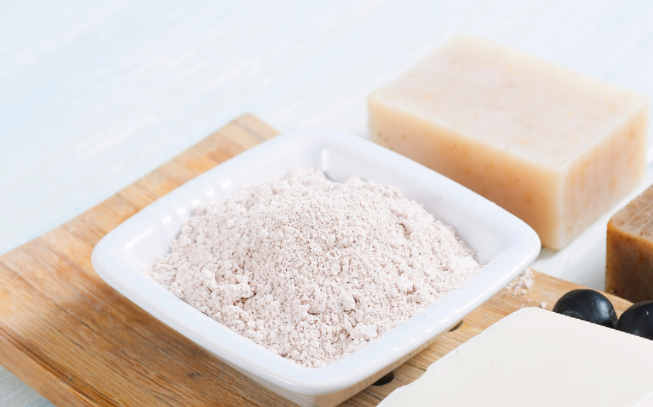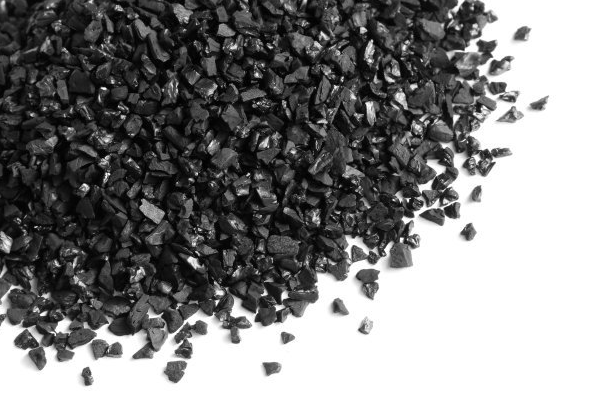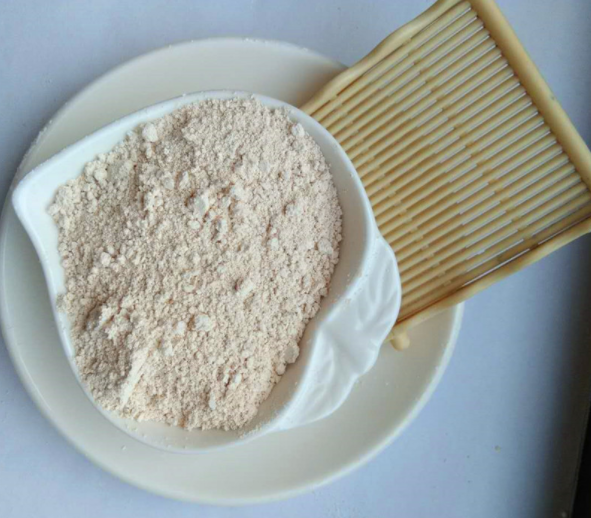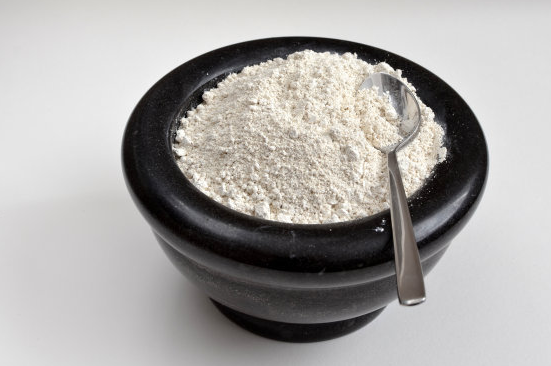The decolorization of edible oil is part of the oil refining process. It removes impurities that adversely affect the appearance and properties of triglycerides (triglyceryl compounds). Usually, the process of degumming and alkali refining (neutralization) is carried out first. The decolorization process will remove the specific harmful impurities that cannot be removed in the previous process. The decolorization process is the process of mixing adsorbent and grease and then filtering. The amount and characteristics of the adsorbent are related to decolorization. The success or efficiency of the operation.
1. Activated clay
Activated clay is an adsorbent with high activity that is processed by bentonite as a raw material, and is the most widely used in the decolorization of the oil industry. Activated clay has a strong adsorption capacity for pigments in oils, especially chlorophyll and other colloidal impurities, and has a stronger adsorption capacity for basic atomic groups and polar atomic groups. After the oil is decolorized by white clay, a little bit of earthy smell will remain, which can be removed during the deodorization process.
2. Ingredients
The main components of activated clay are silicon dioxide (SiO2), aluminum oxide (Al2O3), and iron oxide (Fe2O3).
3. Performance
The main properties and uses of activated clay are:
(1) It has a wide range of decolorization adsorption and purification power. It has a good adsorption and decolorization effect in the application of oil decolorization. It has strong adsorption to pigments and impurities. The decolorization rate of various pigments in vegetable oil reaches 85. ~95%
(2) With specific adsorption, it can remove all kinds of oil dark pigments and impurities, such as chlorophyll, lutein and carotene. After decolorization and purification, the oil is light, clear and bright, and has good stability and low acid value. .
(3) It has the ability to adsorb and remove aflatoxins and benzopyrene in oils.
(4) Activated clay as a processing aid absorbs the above-mentioned pigments, impurities and harmful substances, and is completely separated from the oil after strict filtration. This filtration technology and control means are mature technologies in China.
(5) Activated clay has a certain shelf life, generally 12 months. Although the expired activated clay will not affect the quality of oil, it will absorb a certain amount of moisture in the air, which reduces its decolorization power and increases grease loss, which leads to an increase in production and processing costs.
4. Production process
Activated clay processing and production methods using bentonite as raw materials mainly include wet method, dry method, semi-wet method and so on.
The traditional total wet method is to mix bentonite, sulfuric acid, and water and heat to 100°C with stirring to activate for a period of time, then wash, dry, and crush to obtain the product. The biggest disadvantage of this method is that it consumes a large amount of acid, which results in large washing water consumption, serious environmental pollution and high cost.
The traditional all-dry production process is to mix a small amount of sulfuric acid and water with bentonite and then fully stir, leave it for a period of time, then dry and smash to obtain the finished product. Although this method reduces the amount of acid used and has no environmental pollution such as waste water discharge, its product quality is low, which greatly limits its use.
The semi-wet production process is to mix a small amount of sulfuric acid and water with bentonite and fully stir, activate (place) at a certain temperature for a period of time, and then add acid and water for the second step of activation. The semi-wet production process better solves the problems of the full-wet process and the full-dry process. The process is simple, the cost is low, and the product quality is high.
Generally speaking, the semi-wet production process reduces the acid consumption by half to two-thirds (1/2~2/3) compared with the traditional process, the water consumption is also reduced by 1/2~2/3, and the waste water is less. The treatment means no environmental pollution and low cost. Under the same conditions, the product quality is 30% higher than the traditional method of decolorization.
5. Application in oil refining and decolorization
Activated clay has a strong selective adsorption effect on pigments. Under certain conditions, it can adsorb pigments and other impurities in grease to achieve the purpose of decolorization. The grease treated by the adsorbent not only achieves the purpose of improving the oil color and removing the gum, but also can effectively remove some trace metal ions in the grease and some substances that can cause the hydrogenation catalyst poisoning, so as to further improve the grease. Refining provides good conditions.
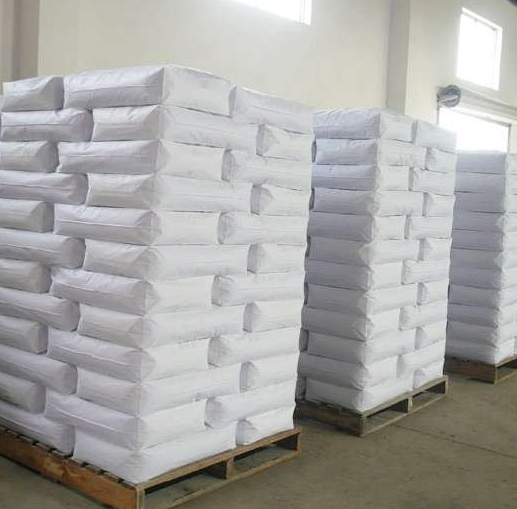
Activated clay has a large specific surface area, strong adsorption capacity, low activity, and does not chemically interact with oils and other chemical substances. At present, it has become the most widely used edible oil decoloring agent. The amount of clay added in the decolorization process is based on the color and luster of the oil. The requirements for refined oil are determined. For example, the internal control standards for small-package oils are higher than those for external bulk oils, and the amount of white clay used in the decolorization process is slightly higher. Generally, the amount used for decolorization is 2%-5% of the oil weight. The more white clay is added, the better the decolorization effect. However, excessive addition of white clay will also reduce the yield of refined oil, because the white clay absorbs some oils while adsorbing pigments, which increases refining consumption and costs. Generally, the oil content of waste white clay in refining workshops is generally 20%-25%. . At present, a few companies use the leaching method to separate the oil from the activated waste clay, but the separated oil is jet-black due to the action of the clay, and cannot be decolorized to produce a good color. Therefore, domestic oil refining manufacturers regard the oil content of waste clay as an important indicator for the selection of activated clay manufacturers.
6. Acceptance criteria for refined vegetable oil decolorized clay
Color: white or gray, light pink
Appearance: powdery solid
Decolorization rate: ≥90%
Particle size (passing 200 mesh screen, %): ≥90%
Moisture: ≤10%
Free acid (calculated as H2SO4, %): ≤0.3
7. Other decolorizing agents used for refining and decolorizing vegetable oil
my country is rich in bentonite resources and is the world's largest producer of bentonite. The annual consumption of bentonite in my country is about 5 million tons, of which 40% is used in the iron ore pellet market, 30% is used in the foundry market, and activated clay accounts for about 10%. It is mainly used for the refining of edible oils and petroleum in the petroleum industry. Refining, decolorization and purification of oils, paraffin wax, wax oil, kerosene and other minerals, food and pharmaceutical industries also have applications.
The annual demand for activated clay for oil refining is about 200,000 tons. In 2016, my country's consumption of edible oils and fats reached a record 30 million tons. The demand for decolorizing agents is increasing year by year, but there are many manufacturers of activated clays and the quality is uneven. Qi, in addition, because the price of activated clay is higher than that of attapulgite, the current application of activated clay in the oil refining industry not only has fierce competition within the industry, but also always faces challenges from other decolorizing materials such as attapulgite.
(1) Activated carbon
Activated carbon is made by carbonization of sawdust, bagasse, chaff, hard nut shell, etc., and then chemically or physically activated. Its main component-carbon content is as high as 90-98%, density is 1.9-2.1 tons/M3, bulk density is 0.08-0.45 tons/M3, has loose pores, large specific surface area, high decolorization coefficient, and hydrophobicity. It can absorb high-molecular substances and is particularly effective in removing blue and green pigments. It can also remove the flash of grease brought by trace mineral oil. In addition, it has strong adsorption capacity for gases, polycyclic aromatic hydrocarbons and pesticide residues. Due to the high price and high oil absorption rate, it is often used together with bleaching earth or activated clay in the oil decolorization operation, and the mixing ratio is usually 1:10-20. Mixed use can significantly improve the decolorization ability, and can remove the smell of bleached soil
(2) Attapulgite
Attapulgite is a magnesium-rich fibrous mineral whose main component is silicon dioxide. This kind of soil is delicate and has a blue-gray or off-white appearance. Farmers in the producing area used it as a feed additive and no animal disease was found. Attapulgite has a good decolorization effect. Compared with activated white clay, the amount of decolorization is less, the oil loss is small, and the price is low. The problem is that it is difficult to filter, so the fineness of the soil should be increased appropriately.
(3) Natural drifting soil
Natural bleached soil, scientific name bentonite. Its main component is (Al4Si8O20(OH)4•nH2O), with a small amount of Ca, Mg,•Fe, Na, K and other components. The pH of the suspension is 5-6, which is acidic, so it is also called acid clay. Natural bleached soil is processed only by physical methods from mining to final grinding and classification. Its structure is microporous crystal or amorphous, and its specific surface area is much larger than that of other clays. It has a certain activity, but its decolorization coefficient is low (referring to the same batch of grease before and after decolorization, and at the same time observe the ratio of oil column height when the same color is reached) , The oil absorption rate is also high, so it is gradually replaced by activated clay.
(4) Zeolite
Zeolite is a multi-cycle and multi-mineral lake basin deposit between acidic volcanic lava and clastic deposits. The melting or hydrolysis of many series of volcanic glass forms a clinoptilolite deposit, which is obtained by mining, screening, grinding and sieving. Zeolite adsorbent. Its chemical composition is mainly silica, followed by alumina. Zeolite has a good decolorization effect. It can also reduce the acid value and moisture of the oil during decolorization. The price is cheaper than activated clay. It is a new material for the decolorization of oil.
(5) Diatomaceous earth
Diatomaceous earth evolved from the remains of single-celled potassium silicate shells under the action of natural forces. Diatomaceous earth with better purity is white, generally light gray or light reddish brown. The main chemical component is silica, which has a certain adsorption capacity for pigments, but the decolorization coefficient is low and the oil absorption rate is high. It is in the production of oil industry. Used as a filter aid.
(6) Other decolorizing agents
The adsorbents used in
oil decolorization include activated alumina and alumina treated with sulfurous acid.
